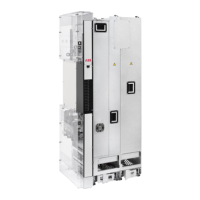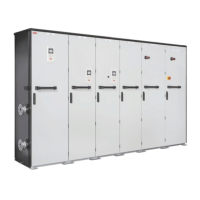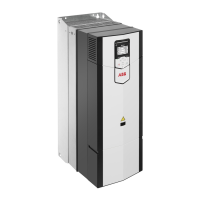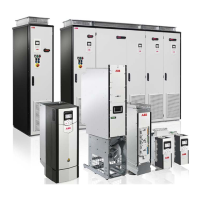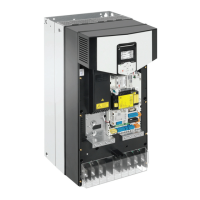Continuous rms output current. No overload capability at 40 °C (104 °F).
I
N
Typical motor power in no-overload use
P
N
Continuous rms output current allowing 10% overload for 1 minute every 5 minutes
I
Ld
Continuous rms output current allowing 50% overload for 1 minute every 5 minutes
I
Hd
■ Derating for output voltage boosting
The drive can output a higher motor voltage than the supply voltage. This can require
derating of the drive output power depending on the difference between the supply voltage
and the output voltage to the motor for continuous operation.
This drawing shows the required derating for -3 and -5 (400 V and 500 V) drive types.
0.80 0.900.85 1.000.95 1.10
1.10
1.05
1.05
1.00
0.95
0.90
0.85
0.80
0.75
0.70
0.975
0.875
P/P
N
U/U
N
Example 1: P
N
for ACS880-34-650A-3 is 355 kW. The input voltage (U) is 350 V. -> U/U
N
= 350 V / 400 V = 0.875. -> P/P
N
= 0.975 -> The derated power P = 0.975 × 355 kW =
346 kW.
To boost the output voltage to correspond the nominal supply voltage 400 V, increase the
DC voltage to 400 V × √2 × 1.04 = 588 V.
Example 2: P
N
for ACS880-34-503A-5 is 355 kW. The input voltage (U) is 450 V. -> U/U
N
= 450 V / 500 V = 0.9. -> P/P
N
= 1.00 -> The derated power P = 1.00 × 355 kW = 355 kW.
To boost the output voltage to correspond the nominal supply voltage 500 V, increase the
DC voltage to 500 V × √2 × 1.04 = 735 V.
This drawing shows the required derating for -7 (690 V and 575 V) drive types.
0.80 0.85 0.95 1.000.90 1.05 1.10
1.10
1.05
1.00
0.95
0.90
0.85
0.80
0.75
0.70
P/P
N
U/U
N
To boost the output voltage to correspond the nominal supply voltage 690 V, increase the
DC voltage to 690 V × √2 × 1.04 = 1015 V.
Input voltage of the drive
U
Technical data 181
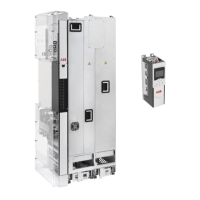
